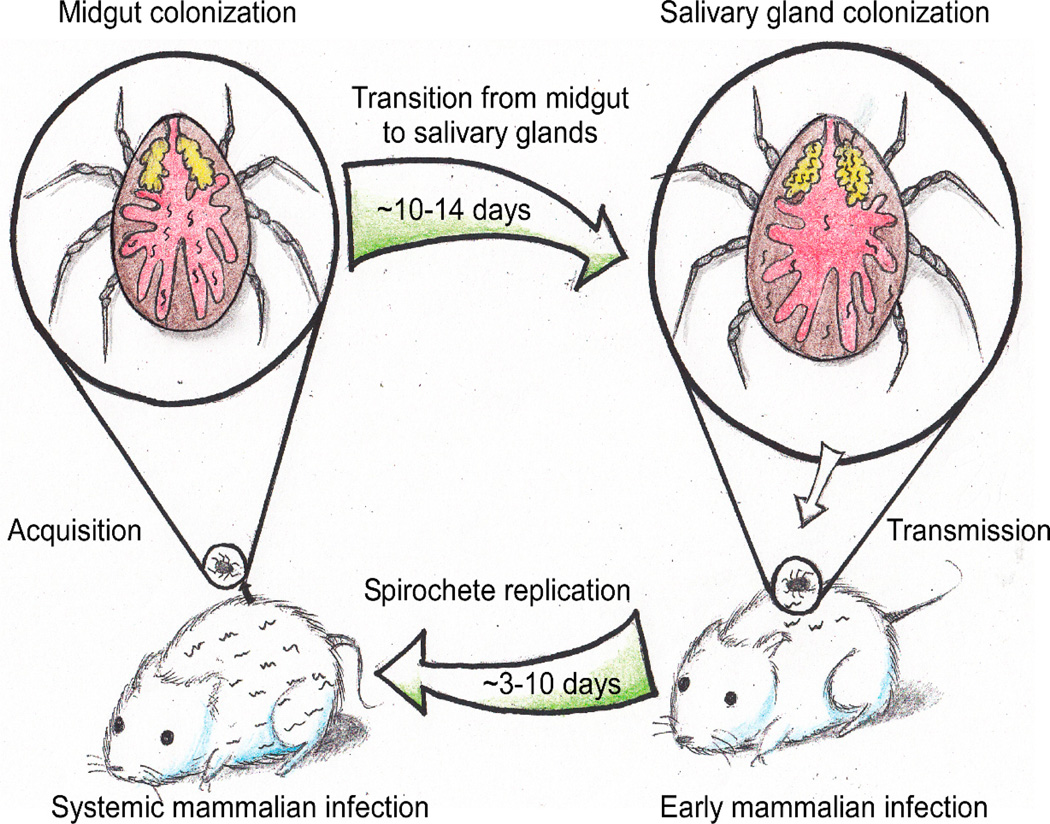Figure 2.
The tick-mammalian transmission cycle of ABRF spirochetes. In the tick, the salivary gland population of RF spirochetes is essential for mammalian infection because of the rapid feeding behavior of the tick. Entry into the mammal is characterized by early infection, and the pathogens are likely preadapted to evade innate immunity. During the following three to 10 days, RF spirochetes subvert the host antibody response leading to systemic infections. This phase of the pathogen’s life cycle is characterized by evasion of the host antibody response through antigenic variation, and replication to densities upwards of 1 × 107 spirochetes per milliliter of blood. During an acquisition bloodmeal, RF spirochetes enter and colonize the midgut. Within 10–14 days a population exits the midgut and migrates to colonize the salivary glands, completing the life cycle of the spirochetes in the argasid tick vector.

